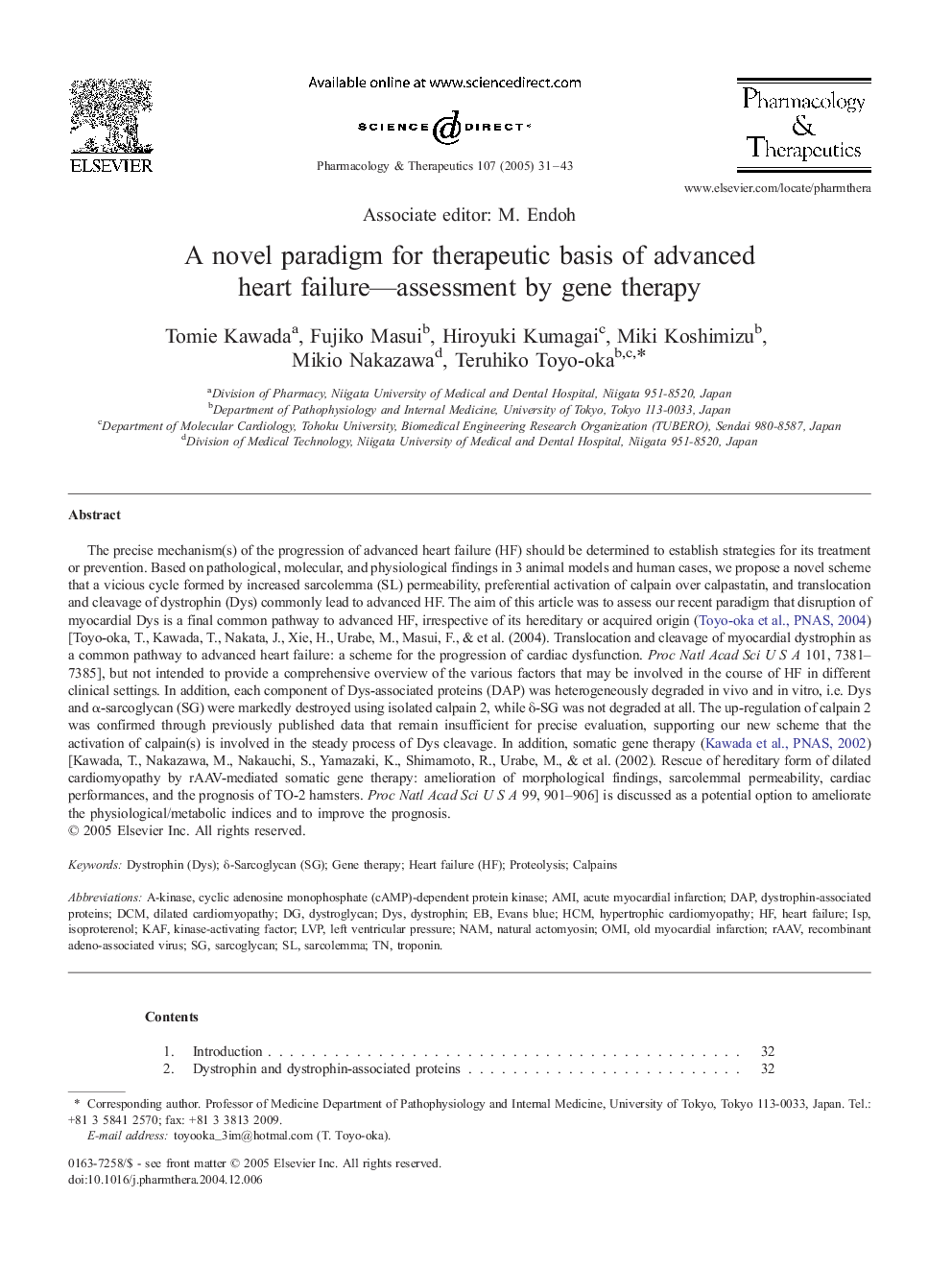| Article ID | Journal | Published Year | Pages | File Type |
|---|---|---|---|---|
| 9015882 | Pharmacology & Therapeutics | 2005 | 13 Pages |
Abstract
The precise mechanism(s) of the progression of advanced heart failure (HF) should be determined to establish strategies for its treatment or prevention. Based on pathological, molecular, and physiological findings in 3 animal models and human cases, we propose a novel scheme that a vicious cycle formed by increased sarcolemma (SL) permeability, preferential activation of calpain over calpastatin, and translocation and cleavage of dystrophin (Dys) commonly lead to advanced HF. The aim of this article was to assess our recent paradigm that disruption of myocardial Dys is a final common pathway to advanced HF, irrespective of its hereditary or acquired origin (Toyo-oka et al., PNAS, 2004) [Toyo-oka, T., Kawada, T., Nakata, J., Xie, H., Urabe, M., Masui, F., & et al. (2004). Translocation and cleavage of myocardial dystrophin as a common pathway to advanced heart failure: a scheme for the progression of cardiac dysfunction. Proc Natl Acad Sci U S A 101, 7381-7385], but not intended to provide a comprehensive overview of the various factors that may be involved in the course of HF in different clinical settings. In addition, each component of Dys-associated proteins (DAP) was heterogeneously degraded in vivo and in vitro, i.e. Dys and α-sarcoglycan (SG) were markedly destroyed using isolated calpain 2, while δ-SG was not degraded at all. The up-regulation of calpain 2 was confirmed through previously published data that remain insufficient for precise evaluation, supporting our new scheme that the activation of calpain(s) is involved in the steady process of Dys cleavage. In addition, somatic gene therapy (Kawada et al., PNAS, 2002) [Kawada, T., Nakazawa, M., Nakauchi, S., Yamazaki, K., Shimamoto, R., Urabe, M., & et al. (2002). Rescue of hereditary form of dilated cardiomyopathy by rAAV-mediated somatic gene therapy: amelioration of morphological findings, sarcolemmal permeability, cardiac performances, and the prognosis of TO-2 hamsters. Proc Natl Acad Sci U S A 99, 901-906] is discussed as a potential option to ameliorate the physiological/metabolic indices and to improve the prognosis.
Keywords
Natural actomyosinDCMDAPCalpainsDYSOMISarcoglycanrAAVISPLVPA-kinaseHCMAmIOld myocardial infarctionisoproterenolEvans BlueTroponinDystrophinDystroglycanSarcolemmaAcute myocardial infarctionleft ventricular pressureHeart failure (HF)heart failureNAMrecombinant adeno-associated virusProteolysisDystrophin-associated proteinsGene therapyDilated cardiomyopathyHypertrophic cardiomyopathy
Related Topics
Health Sciences
Pharmacology, Toxicology and Pharmaceutical Science
Pharmacology
Authors
Tomie Kawada, Fujiko Masui, Hiroyuki Kumagai, Miki Koshimizu, Mikio Nakazawa, Teruhiko Toyo-oka,
